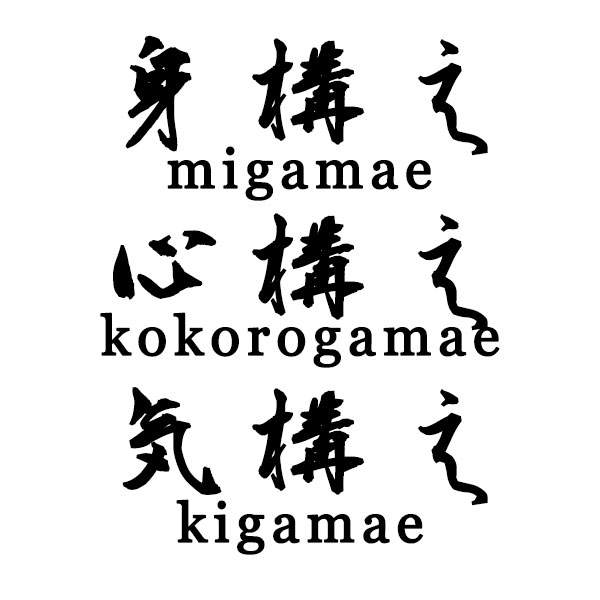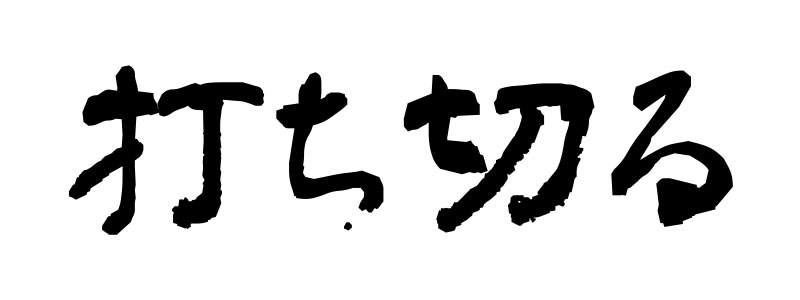You Got It!
Kendo terminology:
Kendo in Japanese
We have words in kendo terminology that we don't use daily in Japan. Kendo terminology consists of :
- words just used in kendo
- old Japanese words and
- words that all Japanese people know.
We should definitely know some of the words such as rei and words for a sword.
There are some words that you don't have to be able to pronounce but that are useful to know.
So please visit here time to time so that you can find some new words that would help you understand kendo better.
The following is a list of the kendo terminology. If you are looking for a particular word, use the "find" function. The easiest way to use the find function is:
- press "ctrl" and "F" on your keyboard.
- a little pop-up window shows up (Internet Explorer) or
- a little box appears at the bottom of the browser (Firefox)
- type a word/phrase you are looking for in a box
- click "find"
You can find a word/phrase you are looking for if this page contains it.
I will add kendo terminology constantly and try to interact with other pages so that you can have have a better grasp of the meaning.
The followings are kendo terminology that I currently have.
Time is money. Get what you want, learn what you want, and come back and learn some more to improve the world kendo!
After searching the website and still you could not find what you were looking for, please tell me what you are looking for through the form.

Custom Search
Mi-Gamae, Kokoro-Gamae, Ki-Gamae
 |
- Mi-Ggamae, Kokoro-Gamae an Ki-Gamae are 3 important elements to improve your kendo. Your kendo quality will be improved if you know what they are. Hope you like the article. |
 |
- Do you know what tanren means? It is more than just training that is usually translated to. Learn its meaning to change the value of your kendo training. |
 |
- Do you know what Uchikiru Means? If not, please learn it right now. This is one of the very important concept of kendo. |
- As a kendoist, we should not forget the meaning of the term, keiko. We should never forget this.
Kyo and Jitsu
- Kyo and Jitsu. These words are very important to know especially when you start learning when you should attack your opponent and when you should not.
Degeiko
- Degeiko is an important training method in kendo. It means we go to other dojo and train with others. But do you know the benefits we get from degeiko? Find out how great the degeiko is.
Tsubazeriai
- Tsubazeriai (Tsuba-zeriai) is actually harder than it looks. Most of us are probably doing wrong because it is easy to forget what it means and how we should be doing it.
Onegaishimasu & Arigato Gozaimashita
- At the beginning of training, right before we train with a training partner we always say this word. After we are done training, we say "Arigato Gozaimashita". This is more well-known. But let me analyse the terms a bit.
Seme & San Sappo
- We use this term, seme, all the time. We use it a lot since it is a very important process to attack our opponent. San Sappo gives us tips to execute a good seme.
Shumoku ashi
- This is a term to remind us what not to do with our left knee. This bad habit is very common so we should be aware of this. Find out more about shumoku ashi.
Sashimen
- Sashimen was used for a men strike without the cutting motion. Thus, it was considered to be a bad men strike. However, nowadays people use this word referred to as a small men. Find out more about the term, sashimen.
Oikomi
- Oikomi is a name of a training method. If you have some advanced people, you may want to try this method.
Sen
- Sen, sen no sen, sen sen no sen, go no sen. Once we start sparring or jigeiko, we hear these terms quite often. Find out more about these terms.
Heijoshin
- This is an ideal state of mind. Probably you have heard of this word since it is not used not only in kendo. Let's find out what Kendo Guide has to say about this.
Rei
- We all know what rei is, don't we? But do we know ALL of rei? Are you sure that you know every single meaning of rei? If you only know only one meaning of rei, you probably want to go and read this article.
Sword
- The way of the sword. That is kendo. But in Japanese there are many ways of saying "sword" and we have different kanji (Japanese character) for "sword". You don't have to remember these but it is helpful to know what they are.
Issoku Itto No Ma
- We have mainly 3 different distances. This is the very basic distance of kendo. It is critical to understand the concept of this distance; otherwise, you just don't know why people keep telling you to stay in this distance!
Ki Ken Tai Icchi
- I think you will hear this ALL the time. It is critical to perform Ki Ken Tai Icchi to make your cut valid. If you have not heard this phrase, you should go and check it out!
Mushin
- If you know a bit of martial arts, you probably heard this word, mushin. It is translated as "empty mind". But what is "empty mind?" Can you really empty your mind?
Shishin
- Shishin means "stopped mind". What does it do to us? Why should we know about this state of mind? What happens to us? Find it out.
Tenouchi
- Tenouchi is often translated to a "grip" or "snap". These translations are good, but I still feel like something is missing. To make it fully understood, I tried to explain as clearly as possible.
Shikai
- Shikai is an unwanted state of mind. But it is not only one state but four. If you understand these states of mind, you can also understand when you should execute your cut. Isn't it great?
Itsuku
- This is a state of mind that you do not want to have when you are fighting. You want your opponent to be in this state of mind. Why?
Nayasu
- Probably this term is too difficult for children. Many Japanese children and young people may not know this word since we don't use this term in daily Japanese. But if you do kendo, you probably should know this word.

